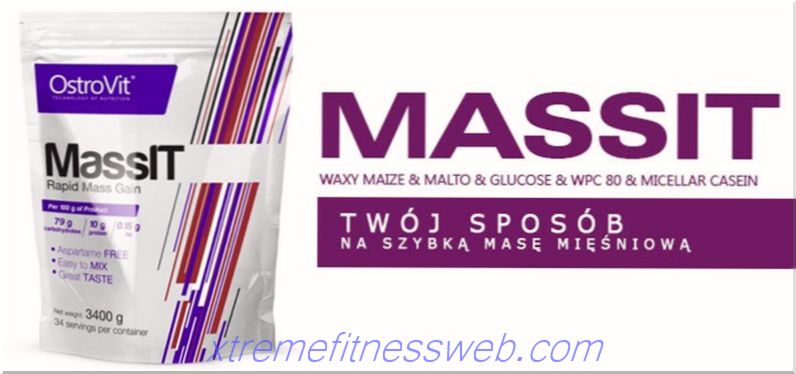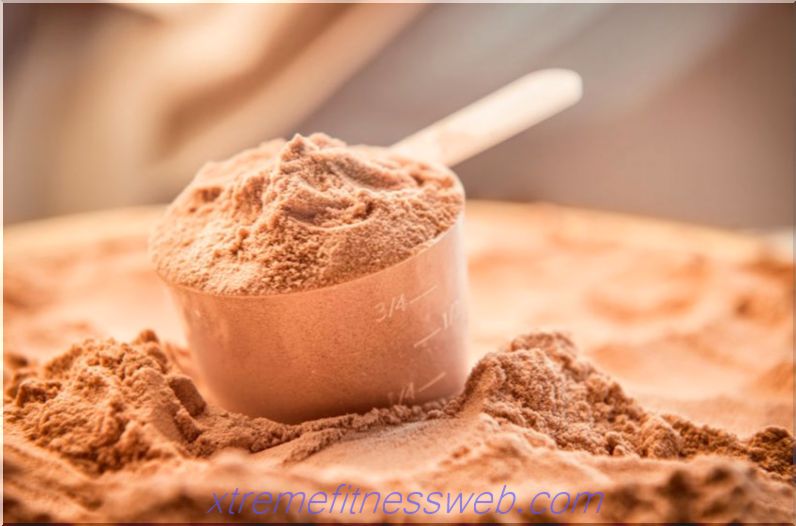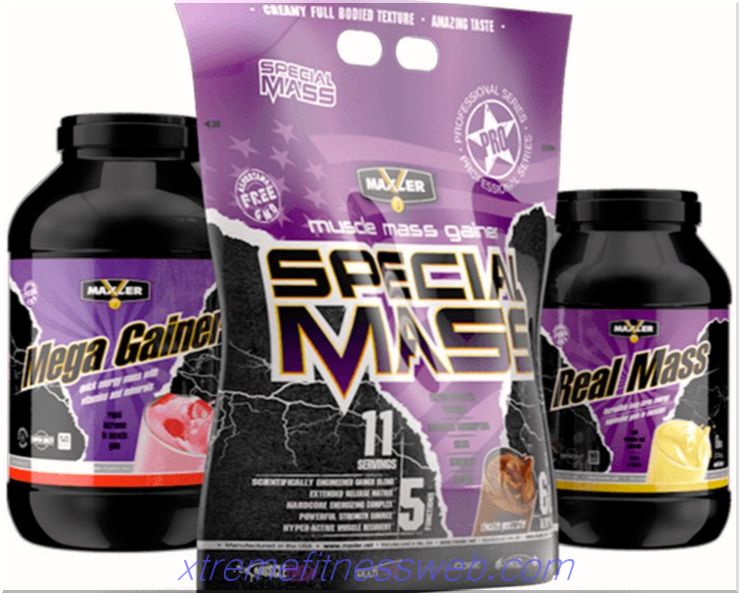- What is maltodextrin: benefits and harms
- Maltodextrin in baby food - is it dangerous for a child?
- Maltodextrin Allergy
- Maltodextrin in bodybuilding: doping or not ">

Athletes take an active dietary supplement as an energy source and in order to maintain themselves in good physical shape. The main thing is to understand that a substance called maltodextrin is different from dextrose. The difference is noticeable even in taste. Maltodextrin has much less sweetness.
To gain muscle mass, bodybuilders take various supplements with high calorie content, which allows you to increase the energy value of the diet. Maltodextrin has a mild and pleasant taste. It is highly soluble in water and other liquids. This property of the substance helps to quickly prepare high-quality protein shakes from protein powders. The last ingredient is taken in an amount from one to two tablespoons, and then mixed with maltodextrin and pour 100-300 ml of liquid (usually water).
Supplements provide the body with energy, but it does not contain fats. Maltodextrin in bodybuilding is usually consumed during muscle gain. The disadvantage of the supplement is that it is quite high in calories. There is no fat in the product, but high energy value can lead to the accumulation of fat under the skin. The advantage of dietary supplements is that it provides high productivity in training by reducing the rate of conversion of carbohydrates.
Maltodextrin is recommended to be diluted with either water or fruit juice. It is better to mix the substance in screw mixers or a shaker. The supplement goes well with protein powders. It diffuses the protein mixture, which improves the taste of maltodextrin. These components perfectly complement one another. The resulting cocktail is drunk during training and before the start of the lesson. Thus, the athlete’s performance improves and carbohydrate and glycogen stores are quickly replenished. The usual portion of maltodextrin is 38 g. It contains complex carbohydrates (34 g) and 145 kcal.
There is no artificial lactose or sweetener in this supplement. It is pure maltodextrin, which is an indisputable advantage.
Maltodextrin glycemic index
- Similarities and differences between maltodextrin and dextrose

Products manufactured by the modern food industry contain many additives. Among the list of ingredients indicated on the package, maltodextrin is often listed. For most buyers, this name does not mean anything, because the masses of consumers know either nothing or very little about the properties of the component. People who care about the balance and correctness of their diet, when they see the name maltodextrin in the list of components, begin to look for information about how useful or harmful it is. Such interest is not accidental. There are many nutritional supplements that can be harmful in certain circumstances.
Content
- 1 What is maltodextrin: benefits and harms
- 1.1 Maltodextrin in products: purpose and important properties
- 2 Maltodextrin in baby food - is it dangerous for the child?> 3 Allergy to maltodextrin
- 4 Maltodextrin in bodybuilding: doping or not?
- 5 Glycemic index of maltodextrin
- 6 Similarities and differences of maltodextrin with dextrose
What is maltodextrin: benefits and harms

Maltodextrin is a biologically active additive (BAA) and is actively used in the food industry. Maltodextrin is most often added to sweets and baby food than to other foods. In small concentrations, dietary supplements contain bakery and confectionery products. Maximum supplement concentrations are part of sports nutrition. Dietary products also contain this dietary supplement, since it acts as a substitute for sugar, that is, is a substitute.
Maltodextrin is obtained by processing starch. The substance is in the form of a hygroscopic creamy or completely white powder. It can perform the following functions:
- Act as a baking powder, which is added to the dough when kneading.
- Act as an emulsifier in milk.
- Promote the rapid dissolution of products, for example, powder mixtures.
- Be a thickener to obtain the product of the desired consistency.
- To slow down the oxidation processes, which allows you to preserve the marketable color of products longer.
- To give the jelly form of food products of the corresponding category.
- To improve the absorption of substances in the gastrointestinal tract, which, of course, is an advantage for the consumer.
The list of maltodextrin properties is impressive, but the question of how harmless or beneficial it is for the body remains open. Manufacturers benefit from the use of this supplement. It allows you to maintain the shape and brightness of sweets with sweets, and the liver to remain crumbly. Maltodextrin is produced most often as corn or potato starch. The powdery mixture enhances the taste perception, that is, the sensations after consuming a product with this supplement are much brighter and more pleasant. In addition, the substance absorbs moisture well. The component may also be present in drugs that are used in the preparation of dietary supplements.
The main advantage of maltodextrin for athletes is that when it enters the stomach, it is transformed into glucose, which is a source of energy. Thus, athletes receive a powerful boost of vigor for intense training and participation in competitions. Maltodextrin is not a dope. The substance is not one of the prohibited substances, since it is present in numerous food products, therefore it is freely used by many athletes.
Maltodextrin in products: purpose and important properties

Biologically active additives are added to the following product names:
- Children's and sports nutrition to improve the digestibility of the trace elements that make up the mixtures.
- Confectionery to enhance palatability and quality.
- Sweets, which allows a long time to maintain shape and attractive color.
- Ice cream to extend shelf life and durability of treats.
- Sausages in which maltodextrin acts as a source of animal fat.
- Perishable products for the preservation of commercial and taste during transportation.
- Fast food, in which the additive contributes to the crystallization and dissolution of powdered preservatives, as well as the breakdown of convenience foods.
- Sauces and seasonings to reduce sugar levels and enhance palatability.
Maltodextrin is used for spraying fruit crops. The substance helps protect berries from damage by insects and preserves the freshness of fruits.
Without the addition of this biologically active supplement, the products would cease to be what their customers are used to seeing. The absence of maltodextrin in the composition of bread would lead to a lack of a pleasant smell, would turn jelly into a shapeless cake, and candies would lose their bright and appetizing color. Baking without maltodextrin quickly becomes stale and tasteless.
Maltodextrin in baby food - is it dangerous for a child?

The additive is one of the varieties of starch and is part of many mixtures for babies. This component is designed to help in the breakdown of trace elements, which is especially important for those children who have problems with the gastrointestinal tract. If the child suffers from constipation or, conversely, loose stools, it means that the milk mixture is improperly selected and most likely does not contain maltodextrin.
In the diet, in which dietary supplements are added, the problem with the absorption of substances even in the presence of gastrointestinal problems is almost completely devoid of. Children who eat mixtures with maltodextrin receive a large amount of energy even when they eat only small portions. Of course, if a child has healthy digestion, he loves cereals and milk, then there is no need for nutrition with an additive. He can cook ordinary baby food without any extraneous additives.
Maltodextrin Allergy

Maltodextrin is not an allergen per se. This does not mean that intolerance does not occur at all. Other components that are allergens may be present in the composition of the additive. Amplifiers of taste characteristics and other excipients, for example, lemon, which are placed in powder so that dietary supplements enhance the body's defense against colds, are considered such.
In its pure form, maltodextrin has the structure of natural starch and does not cause allergic manifestations. It is not split by the gastrointestinal juice and is resistant to dietary fiber and acids. Along with the absence of an irritating effect, this supplement also has a positive effect on digestion, helps to reduce radionuclides, heavy metals, sugar, waste, harmful cholesterol.
Maltodextrin in bodybuilding: doping or not "> 
Athletes take an active dietary supplement as an energy source and in order to maintain themselves in good physical shape. The main thing is to understand that a substance called maltodextrin is different from dextrose. The difference is noticeable even in taste. Maltodextrin has much less sweetness.
To gain muscle mass, bodybuilders take various supplements with high calorie content, which allows you to increase the energy value of the diet. Maltodextrin has a mild and pleasant taste. It is highly soluble in water and other liquids. This property of the substance helps to quickly prepare high-quality protein shakes from protein powders. The last ingredient is taken in an amount from one to two tablespoons, and then mixed with maltodextrin and pour 100-300 ml of liquid (usually water).
Supplements provide the body with energy, but it does not contain fats. Maltodextrin in bodybuilding is usually consumed during muscle gain. The disadvantage of the supplement is that it is quite high in calories. There is no fat in the product, but high energy value can lead to the accumulation of fat under the skin. The advantage of dietary supplements is that it provides high productivity in training by reducing the rate of conversion of carbohydrates.
Maltodextrin is recommended to be diluted with either water or fruit juice. It is better to mix the substance in screw mixers or a shaker. The supplement goes well with protein powders. It diffuses the protein mixture, which improves the taste of maltodextrin. These components perfectly complement one another. The resulting cocktail is drunk during training and before the start of the lesson. Thus, the athlete’s performance improves and carbohydrate and glycogen stores are quickly replenished. The usual portion of maltodextrin is 38 g. It contains complex carbohydrates (34 g) and 145 kcal.
There is no artificial lactose or sweetener in this supplement. It is pure maltodextrin, which is an indisputable advantage.
Maltodextrin glycemic index

Dietary supplement has a high GI. This means that it presents a danger only to those who suffer from type 2 diabetes and only during the period of remission. A substance does not do any harm to a healthy person, but, on the contrary, is useful. because it contributes to the natural production of insulin.
What matters is from which source the substance is derived. Typically, maltodextrin is made from either starch or potato. The additive can be made from wheat, which is typical for many eastern countries. In such cases, a warning about the presence of gluten must be indicated on the packaging of baby food, since for some babies this can be dangerous. In the United States and Europe, maltodextrin is made from starchy safe ingredients. They may also contain gluten, but it is not dangerous for allergy sufferers.
Maltodextrin can be made from rice, potato, corn starch or from all three components. The substance is a source of carbohydrate energy, the history of use of which dates back many decades. Sometimes it is mixed with dextrose, BCAA complexes, amino acid and protein shakes. Its glycemic index is high, but the substance is usually classified as complex carbohydrates, since the raw material for the product is natural starch.
A food supplement may be mixed with dextrose monohydrate. The substance is an easily adaptable product that is great for athletes as a reliable, affordable and effective source of carbohydrates, which can increase the intensity of training by increasing endurance.
Similarities and differences between maltodextrin and dextrose

These substances have some similarities. Maltose is not considered in this context, since it is fundamentally different from these additives.
Dextrose and maltodextrin have many common features, but also differences:
- Production. Maltodextrin is produced by the enzymatic degradation of starch and is used in isotonics and gainers as an additive for kneading sports drinks. Dextrose is obtained by hydrolysis of cellulose and starch, obtaining a simpler carbohydrate with a monosaccharide.
- Function. Reception of dextrose, even without intense physical activity, provides better nutrition for muscle tissue, does not allow high glycogen levels to affect the duration of a workout, and delays the onset of fatigue. Maltodextrin is quickly absorbed and accelerates muscle nutrition, for which it is highly appreciated by athletes, and especially those involved in cycling.
- Participation. Maltodextrin is replaced by glucose-based gainers, since it is not sugar and provides much better nutrition for blood cells. Dextrose is synergistic with creatine and is involved in glycogen resynthesis, indirectly increasing muscle strength.
- Price. Dextrose can be bought much cheaper than a complex carbohydrate such as amylopectin. Maltodextrin is even more affordable and is the most cost-effective dietary supplement in the segment of its kind.
- Dosage Dextrose is taken at the rate of 0.5-1 g per 1 minute of training. The exact amount depends on the athlete’s own weight. Maltodextrin is drunk in 3 g for every 2 kg of body weight.
- GI and calorie content. In maltodextrin, the glycemic index is 136, and the calorific value per 100 g is 380. The first indicator for dextrose is 100, and the second is 337.
These substances are necessary for the formation of muscle mass in childhood. For adults, if they are not actively involved in sports, such supplements are best avoided. Weight gainers with maltodextrin content are useful for athletes, so they are valued higher than those in which it is not.








